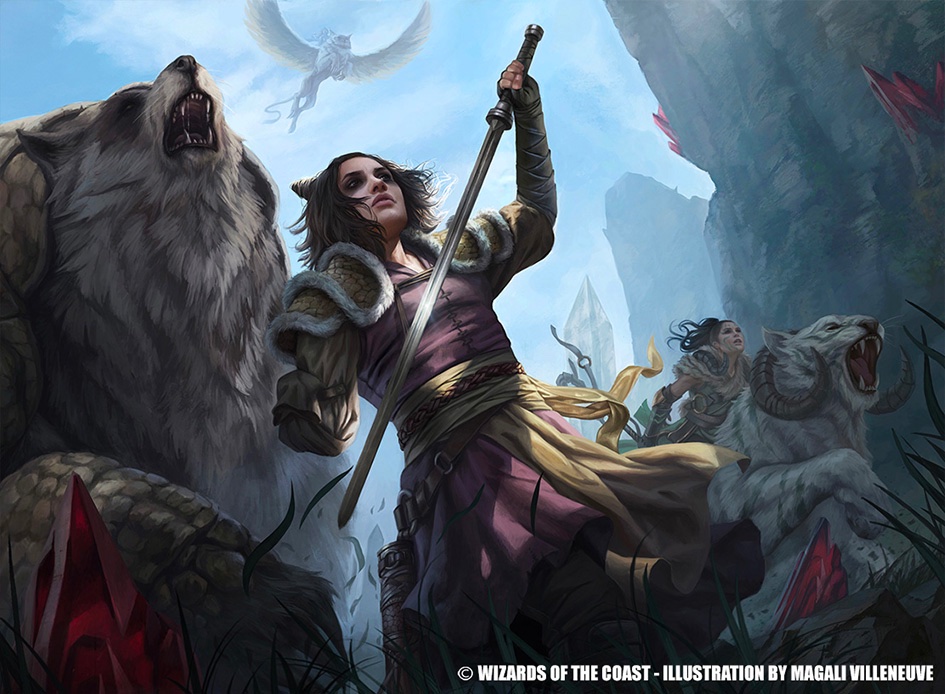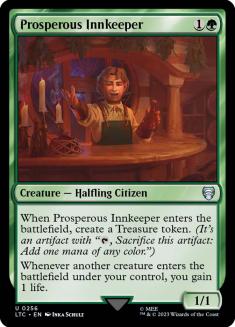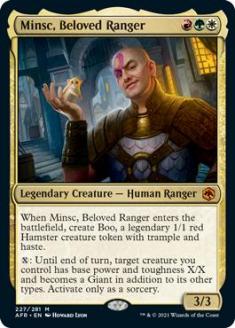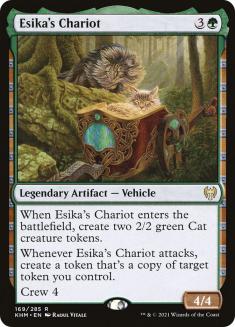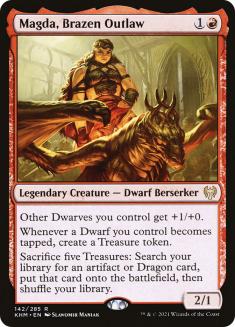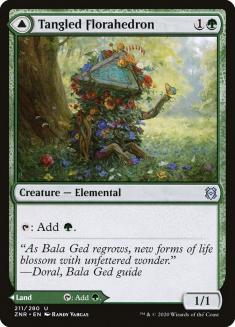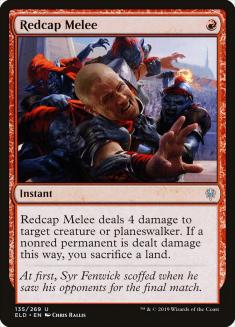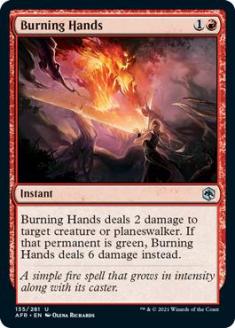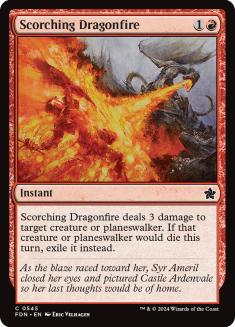I’ve been a big fan of Winota, Joiner of Forces for a while now. You might remember I wrote several articles on different versions of the deck throughout its tenure in Standard. That said, it always felt like the deck was missing something to push it to Tier 1 status. It was always nice to play with and always competitive, but I could never justify bringing it to a tournament over the Tier 1 options (Rogues, Sultai Ultimatum, etc.).
Now, at the end of its time in Standard, it seems like Winota is poised to shine again, this time in its Naya version. Originally, I did not think the deck was that great – in fact, it seemed very overrated to me – but its performance in the past couple of weeks has been nothing short of extraordinary, so that has caused me to play it more and reassess my opinion.
For example, here’s the metagame breakdown for the past week:
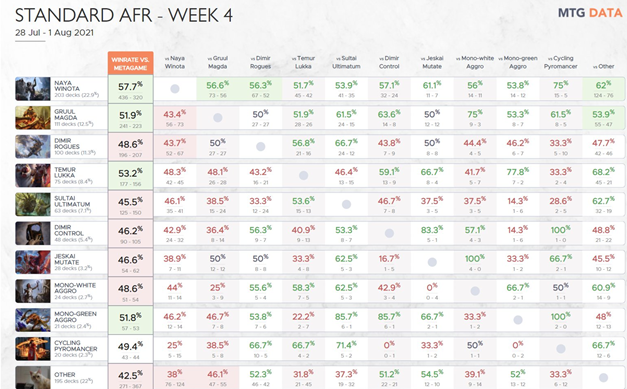
This has Naya Winota posting winning records against literally the entire field, something I’m not sure I’ve ever seen before. Obviously, these win percentages aren’t absolute – the sample is not that large, and no super-important tournaments were included, so they could be skewed – but the deck’s good performance goes back over a week if we look at the SCG Tour Online Satellites on MTGMelee, and it also did well at the Arena Open by all accounts. This such a dominating performance by the deck that, even if we have to account for some things going weirdly, whatever is left is still quite good.
At this point, I’m comfortable calling Naya Winota the deck to beat in Standard. Is it the best deck? I’m not sure, but it’s almost certainly the most popular at this point, and it’s warping everyone’s card choices.
Take, for example, Brad Nelson’s 7-2 Dimir Rogues (Lurrus) list from the Day 1 of the Arena Open:
Creatures (16)
- 1 Lurrus of the Dream-Den
- 4 Thieves' Guild Enforcer
- 4 Ruin Crab
- 3 Merfolk Windrobber
- 4 Soaring Thought-Thief
Lands (24)
Spells (21)
- 1 Disdainful Stroke
- 4 Into the Story
- 4 Drown in the Loch
- 2 Heartless Act
- 3 Of One Mind
- 2 Agadeem's Awakening
- 2 Crippling Fear
- 1 Power Word Kill
- 2 Ray of Enfeeblement
Sideboard

This is Best-of-One, so you need to take it with a grain of salt, but the Winota influence is clear for anyone to see – maindeck Mystical Disputes and Didn’t Say Please are long gone, and there are not only two copies of Crippling Fear in the maindeck but also two copies of Ray of Enfeeblement, a card that is clearly targeted at killing Winota herself even through Selfless Savior.
Now, why is Winota all of a sudden the most popular deck in the format? This has to do with some of the new additions from Adventures in the Forgotten Realms.
Prosperous Innkeeper is a very unassuming card, but it does a couple of important things for Winota decks. First, it helps with mana fixing, which cannot be understated in a deck that’s primarily green but that’s trying to cast Boros gold cards. Second, it accelerates into your four-drops. Sometimes this is Winota herself, but sometimes that’s Esika’s Chariot which you then curve into Winota. Third, it’s a non-Human, so it itself triggers Winota. Fourth, it can gain you quite a bit of life in this deck, since basically the whole deck is creatures and token makers, which makes a difference when you’re racing someone else.
Winota decks always strive to find a balance between Non-humans to trigger Winota and Humans to hit with its trigger – this is the reason the decks usually have to be nearly all creatures, since every single one counts. Minsc, Beloved Ranger is the rare type of card that is both an enabler and also a hit! The card itself is a Human, so you can find it with Winota triggers, but the token it creates (Boo) is not, which means it can help enable the triggers. On top of that, Minsc is two different bodies for Prosperous Innkeeper, and the token it creates can block in a racing situation as well. You don’t use Minsc’s second ability very often, but when it comes up it’s highly relevant.
Another underappreciated aspect of Minsc, Beloved Ranger is that it gives you a haste creature that triggers Winota. It used to be that players could feel safe even if Winota was on the battlefield as long as there was no non-Human, because nothing could enter the battlefield and immediately attack. Now there is Boo, and this makes a Winota-only battlefield a lot more threatening.
Lair of the Hydra isn’t really a game-changer like the previous two cards, but being able to activate your Winota from an empty battlefield and being able to kill them after a sweeper are nice bonuses.
I’m not sure these cards alone would be enough to add Green to the deck – they are good, but the namesake card requires two different colors, and one of your best hits costs four mana in the Boros colors. In the end, the card that really sells Green as a major component is Esika’s Chariot.
Esika’s Chariot is absolutely incredible in Winota for several reasons. First, it has the best art of any Magic card, and this is very important. Second, it produces three bodies that can attack (two Cat tokens and the Vehicle, which Winota can crew the turn you cast it). This means that it’s excellent all by itself, threatening to end the game on the spot if you follow it up with Winota. I believe that, if you go Turn 4 Esika’s Chariot and Turn 5 Winota, even if you’ve done nothing else that game, you’re a big favorite to win.
The third thing it does is give you sweeper protection. One of the best ways to beat Winota traditionally is to sweep the battlefield – something like Crippling Fear or Pestilent Haze can guarantee a turn of stability. If Esika’s Chariot is on the battlefield, not so much. You can immediately drop Winota, activate Chariot, and attack. If you hit Blade Historian you can hit them for twelve, but even something like Elite Spellbinder is seven damage and you disrupt their next play.
The fourth reason is that Chariot is just a powerful card that acts as a secondary threat. The Winota deck is running several underpowered cards to justify playing Winota, Joiner of Forces, which can create some problems if you don’t draw the namesake card or if they deal with it. Chariot packs a punch, and it’s another card that’s worth accelerating into and that they have to deal with – a Turn 3 Chariot is a pretty fast clock spread across multiple bodies, so it allows you to win games even if you don’t have Winota or if it’s dealt with.
In sum, Chariot works exceedingly well with Winota, yet also works very well when you don’t have Winota. These are in short supply and I think that’s the real reason the deck is better than all the other Winota versions that have existed.
Given the restrictive nature of the deck (again, you need Winotas, Humans, and non-Humans), there aren’t a lot of flexible slots, so every build of the deck is virtually the same. The main difference seems to be in the accelerator of choice – most people play Lotus Cobra, but some play Magda, Brazen Outlaw or even Tangled Florahedron.
My preference here is Lotus Cobra. Magda is excellent with Jaspera Sentinel, but if you don’t have the green card that lets you tap it, then Lotus Cobra is usually better, as you can cast a four-drop on Turn 3 without exposing it (and, if it’s Winota, you can immediately attack). Magda also works with Esika’s Chariot in two different ways – you can use Magda to crew it (getting a Treasure) and you can also copy the Treasure with the Chariot. This is not as relevant in this deck as it is in Gruul Adventures, though, because you don’t have Goldspan Dragon (or even anything to search for if you do hit five Treasures), but it can come up with Kenrith, the Returned King.
This is the list I’d play:
Creatures (31)
- 4 Lotus Cobra
- 2 Kenrith, the Returned King
- 4 Winota, Joiner of Forces
- 4 Selfless Savior
- 4 Jaspera Sentinel
- 4 Elite Spellbinder
- 2 Blade Historian
- 4 Prosperous Innkeeper
- 3 Minsc, Beloved Ranger
Lands (23)
Spells (6)

As you can see, this is an extremely streamlined list – I don’t bother with things like Ranger Class in the maindeck because I think you just want to goldfish people. Then, after sideboarding, you bring in a bunch of interaction spells, because the games naturally slow down – everyone has more removal spells for Winota and the rest of your creatures, so the “kill them as soon as possible” approach doesn’t really work, which means you have to play a more grindy game with Vivien, Monsters’ Advocate and Ranger Class.
The key to sideboarding with this deck is that you always need a little bit of critical mass of both enablers and hits. You can take some out, but you have to be careful about this balance. Because of this, it’s better to play more specialized cards – you want to have one Redcap Melee and one Burning Hands instead of two Scorching Dragonfires, for example, because you really cannot take out too many cards versus any one opponent.
On top of having specialized cards, you try to play cards that still work as enablers, such as Ranger Class; Bonecrusher Giant; Vivien, Monsters’ Advocate; and Reidane, God of the Worthy. Those allow you some measure of interaction and staying power without compromising your number of enablers. In return, you usually take out either Selfless Savior (if they have no removal that it counters) or accelerants of some sort, since the games slow down anyway. If they are very good at killing Winota, sometimes I take out some of the potential hits as well.
Overall, this deck is very strong versus anyone who cannot interact with your creatures, such as Mono-Green Aggro and Mono-White Aggro. By itself, Naya Winota is probably enough to drive these decks out of the metagame entirely. Red-based decks can have good removal after sideboarding, but should still be good matchups if they have no way to kill Winota in Game 1. I believe Naya Winota is even-ish versus Sultai, depending on which version of the deck they play (the statistics say it beats it, but there are many versions of Sultai, and when some people are playing Elder Gargaroth and others are playing Negate, that’s a big difference), and overall unfavorable versus Dimir Rogues, which explains its sudden surge in popularity.
The biggest problem with the deck might honestly be the mirror – not in terms of how bad it is (obviously it’s 50/50, so if that’s the worst matchup then you’re in a great spot), but in terms of how there is just nothing that you can do. Both decks are all-in on Winota and have no interaction, so the game is decided by being on the play, having a good draw, and hitting good Humans with Winota. I’d say that, of all the mirrors you can potentially play in Standard, it’s the one where players have the least amount of agency – it really is extremely luck-based. Games 2 and 3 are better, since there is some interaction at least.
Some tips to playing the deck:
- The triggers in this deck are not so good that one (or even two) will automatically win you the game, so you really want to stack them. Sometimes it’s not worth attacking with a Human that will die just to get a trigger – it’s better to attack with a critical mass of things the following turn.
- Because of this, most of the time, if you’re playing versus a sorcery-speed deck, you get a better result by casting Esika’s Chariot first and then Winota. It’ll depend on what else you have on the battlefield, but a hand of Prosperous Innkeeper or Lotus Cobra + Chariot + Winona should almost always cast Chariot on Turn 3 and then Winota on Turn 4, rather than just jamming Winota and getting one trigger.
- You can tap stolen creatures before the third ability of The Akroan War goes off with Jaspera Sentinel and Esika’s Chariot, which will sometimes kill their creature before returning it.
- Jaspera Sentinel has reach and it’s also a Rogue. This is relevant if you’re worried about Crippling Fear – if they name Rogue, your Sentinel will live, so that one is usually safe to commit even if you suspect the sweeper.
- Esika’s Chariot can double up on Treasures from Prosperous Innkeeper as well as the Cat tokens.
- If your opponent has The Akroan War, you can tap your creatures for Chariot or Sentinel so that you don’t have to attack on the second chapter.
- Don’t forget that Kenrith, the Returned King has abilities in all five colors that you can activate with Lotus Cobra or Treasures – the black one is particularly useful.
- Even though green is the primary color in the deck, you only really need one green source. After that, your Pathways should be in red or white so you can cast Blade Historian if you draw it.
All in all, it looks like Naya Winota is here to stay – at least until the rotation, of course. It’s a powerful deck that’s quite simple and straightforward to play, so if you’re okay with the “look at the top six cards of your deck” play style, it’s a great option to pick up.

